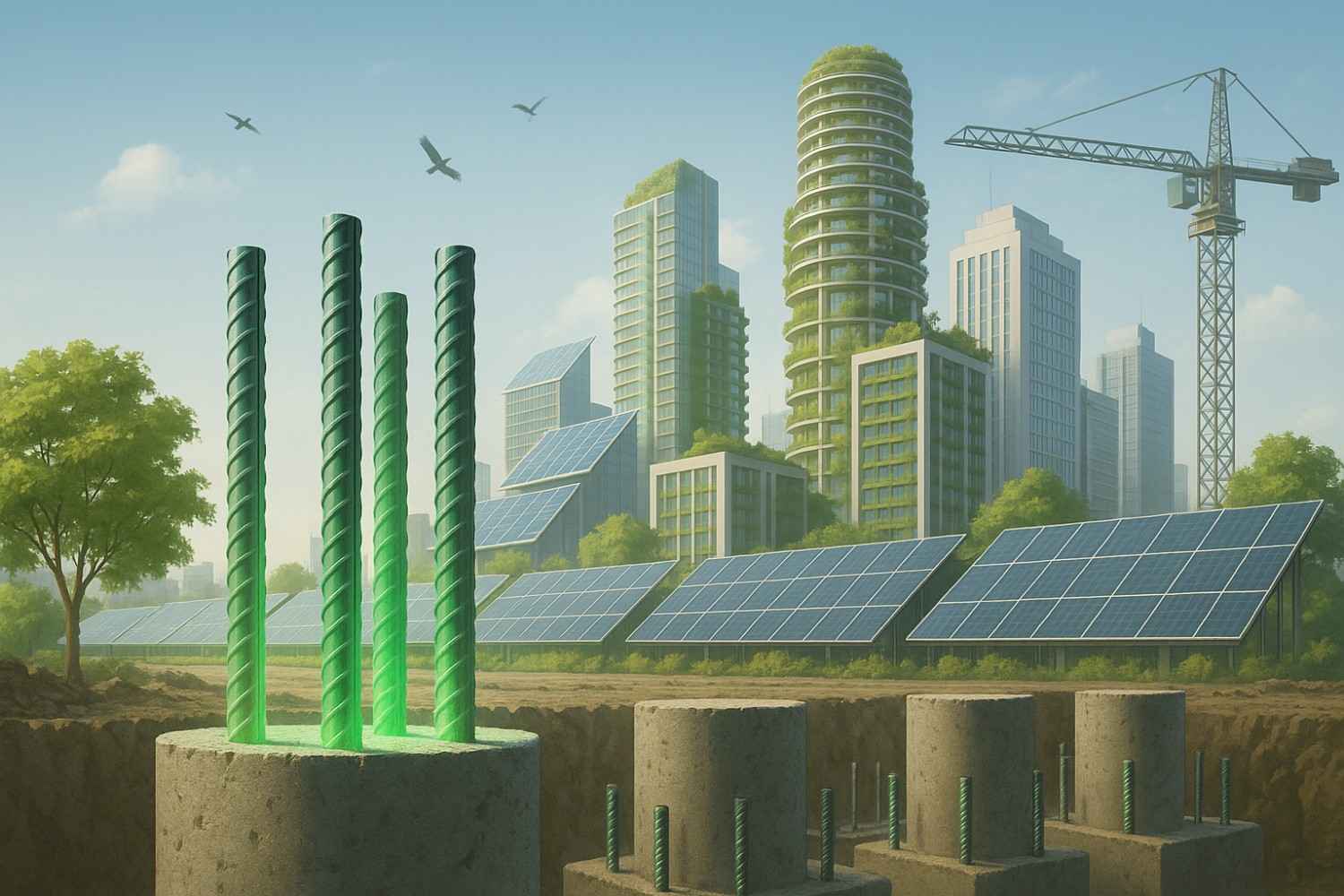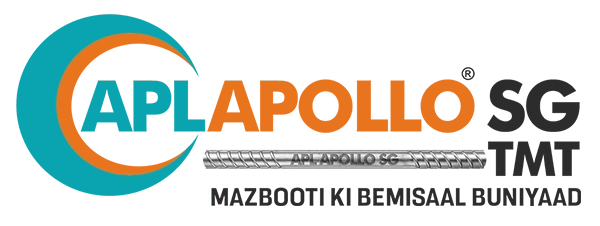
1. Introduction – Why Sustainability Is Now at the Core of India’s Construction Sector
In the last decade, India’s infrastructure and housing boom has pushed steel demand to unprecedented levels. With the government’s vision to achieve Net-Zero emissions by 2070, the focus is shifting from just building to building responsibly.
Steel production is among the world’s highest carbon emitters, contributing nearly 8% of global CO₂ emissions. As India emerges as the second-largest steel producer, the responsibility to reduce this footprint is huge. The construction sector, especially RCC (Reinforced Cement Concrete) projects, is under growing pressure to adopt sustainable practices — and this is where Green Steel comes into play.
Green Steel is not just a buzzword. It’s a manufacturing revolution aimed at producing steel with significantly lower carbon emissions, using cleaner energy sources and recycled materials. In an era where TMT bars are the backbone of nearly every structure — from high-rise apartments to mega bridges — shifting to eco-friendly TMT bars is no longer optional. It’s the future of construction.
2. What Is Green Steel? Breaking It Down Simply
In simple terms, Green Steel is steel produced with minimal environmental impact. Traditional steel manufacturing relies heavily on coal in blast furnaces, releasing massive amounts of CO₂. Green steel, on the other hand, adopts cleaner methods such as:
Hydrogen-based reduction instead of coal, cutting down CO₂ emissions drastically.
Electric arc furnaces powered by renewable energy.
High recycled scrap content, reducing the need for virgin ore extraction.
A report by the World Steel Association notes that switching to such methods can reduce emissions by up to 90%.
When applied to TMT bars, this means your reinforcement steel is not only strong and ductile but also responsible for fewer greenhouse gas emissions during its production cycle. For large-scale RCC projects, the cumulative environmental benefit is significant.
3. Why Eco-Friendly TMT Bars Matter in RCC Construction
The strength and ductility of TMT bars are critical for the safety of RCC structures — but in the sustainability era, another question matters: At what environmental cost was this steel produced?
Using eco-friendly TMT bars offers multiple advantages:
Lower Carbon Footprint – Every tons of green steel prevents several tons of CO₂ from entering the atmosphere.
Longer Lifespan – Eco-certified TMT bars often come with advanced corrosion resistance, making them ideal for coastal projects and humid climates.
Compliance with Green Building Standards – Helps projects qualify for LEED or IGBC certification, which can increase property value.
Positive Brand Image for Developers – Buyers and investors increasingly prefer projects with a sustainability edge.
For example, in a LEED Gold-rated commercial complex in Bengaluru, developers opted for Fe 550D grade APL Apollo SG TMT bars manufactured in a low-emission facility. This choice not only met structural strength requirements but also contributed valuable points toward their green certification.
4. How APL Apollo SG TMT Aligns with Eco Norms
At APL Apollo SG, sustainability isn’t just an afterthought — it’s built into the manufacturing process. The Fe 500, Fe 550 and infrastructure grades Fe 500D, Fe 550D are produced in facilities that:
Adopt energy-efficient rolling mills to reduce energy waste.
Utilize scrap recycling in the production cycle to minimize the need for virgin iron ore.
Follow BIS and ISI certifications to ensure that every batch meets both quality and sustainability standards.
Reduce water wastage through closed-loop cooling systems in the rolling process.
For contractors, this means they can source high-strength, earthquake-resistant TMT bars that are also aligned with green construction goals — without compromising on quality or project timelines.
5. Real-Life Example – LEED-Certified Corporate HQ Using Eco-Friendly TMT Bars
In 2024, a major IT corporate headquarters in Hyderabad was designed to achieve LEED Platinum Certification. The structural consultant specified APL Apollo SG Infra Fe 550D TMT bars for their high ductility and low-carbon manufacturing.
The project faced two challenges:
Meeting sustainability criteria without inflating costs.
Ensuring seismic resilience, as the region falls under a moderate earthquake risk zone.
By sourcing from a certified eco-friendly mill, the developers achieved a 12% reduction in embodied carbon for the structure. This decision also boosted the project’s marketing value, with tenants proud to be associated with an environmentally responsible building.
6. Buying Tips for Eco-Certified TMT Bars
If you’re a builder, contractor, or procurement officer, here’s a quick checklist before placing an order:
Check for BIS/ISI Certification – This ensures both quality and compliance with Indian standards.
Ask for Environmental Compliance Documents – Genuine mills can provide carbon footprint reports.
Choose the Right Grade – For high-rise and infrastructure projects, Fe 500D or Fe 550D offer the best balance of strength and flexibility.
Look for Supply Chain Transparency – Ensure traceability from production to delivery.
7. Common Pitfalls to Avoid
The growing popularity of “green” construction has unfortunately opened the door for greenwashing – false claims of eco-friendliness. Avoid these traps:
Unverified Eco Claims – Always demand third-party certification.
Unknown Mills – Lower prices may mean compromised quality and environmental standards.
Mislabeled Grades – Some suppliers market lower-grade steel as Fe 500/550 – verify with test certificates.
8. Internal Linking for Further Reading
If you want to dive deeper into how to select quality reinforcement steel, check out our blog: Common Mistakes to Avoid When Purchasing TMT Bars — a must-read for avoiding underweight and wrong-grade purchases.
And for insights into structural durability in harsh climates, read: Why TMT Bars Perform in Extreme Weather.
9. Conclusion & Future Outlook
As India marches toward its net-zero goals, the construction industry will be one of the most visible arenas for change. Green Steel is not a distant dream – it’s here, and forward-thinking developers, contractors, and suppliers are already making the shift.
For those in the RCC sector, eco-friendly TMT bars represent a smart investment — they enhance structural integrity, future-proof your project against environmental regulations, and appeal to a growing segment of eco-conscious buyers.
By choosing products like APL Apollo SG TMT Bars that merge strength with sustainability, you’re not just building structures – you’re building a cleaner future.



